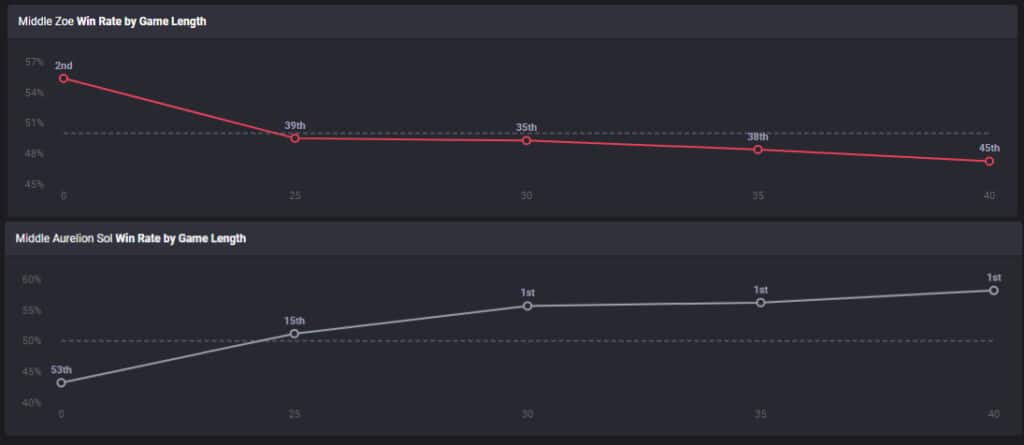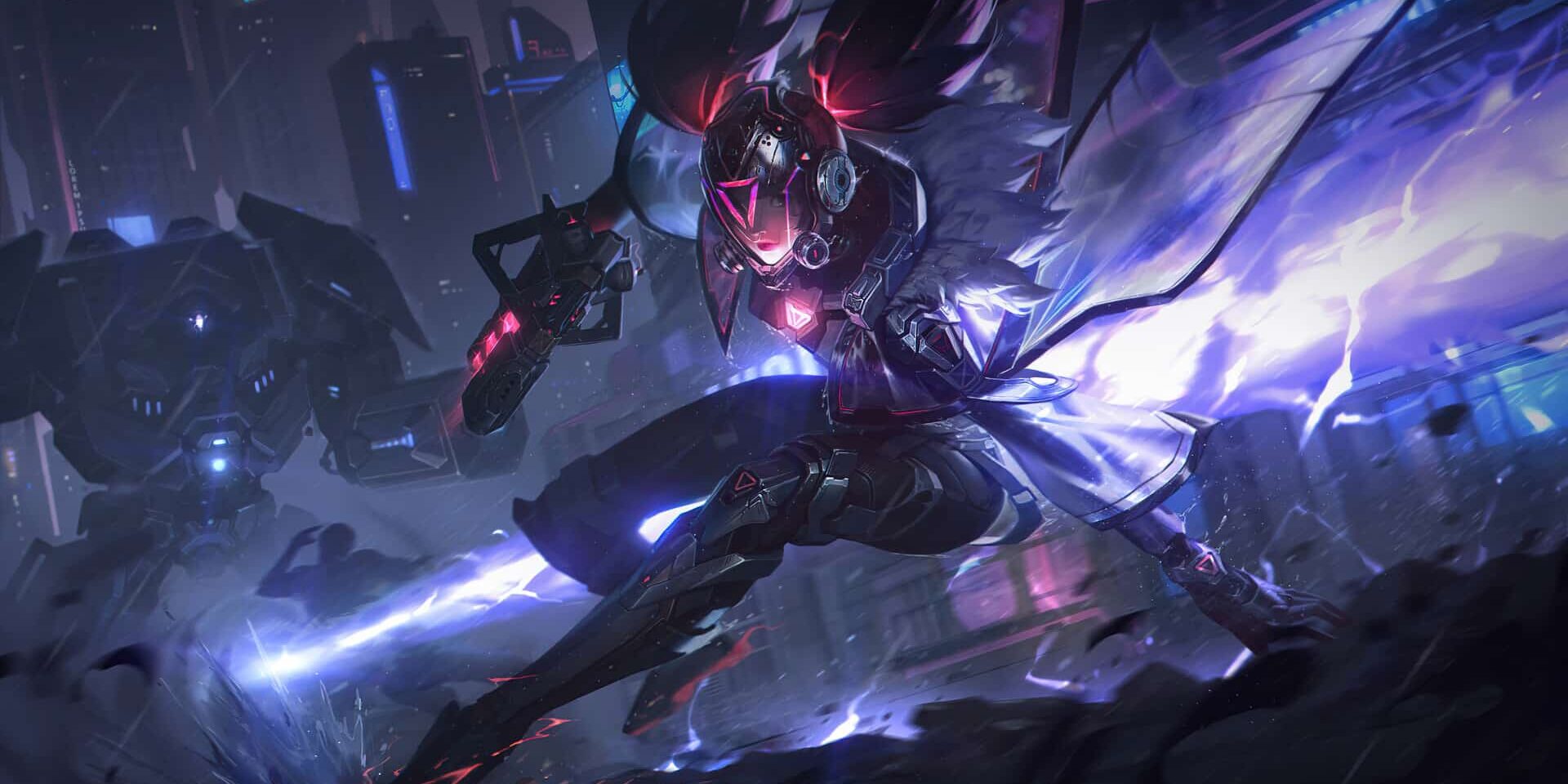Table of Contents
Key Takeaways:
- Tempo is one of the more common and complex macro concepts
- Tempo can be seen as a combination of time, power and position
- But it is further complicated by different compositions have different tempo requirements
Simple Explanation of Tempo
One of the simplest explanations you would find for tempo is the speed at which you play the game. This essentially comes down to staying ahead of your opponent in time, by setting up everything you need to do before an objective and being prepared. Examples are having good lane states, recall timings and rotations. These all aim to maximize resources and to have every possible advantage at objectives and this is done by being able to do things first.
One way one can see advantages in macro is in terms of time, as minions, jungle camps and objectives spawn on fixed timers — experience and gold can then be seen as a function of over time. This can be heavily accelerated by getting kills, turrets and stopped if you die or if you attempt a play that fails. But also by having better wave control than your opponent and thus getting more minion kills. So essentially maximizing your resources possible in a time frame.
You can see tempo in terms of individual matchups, partial team matchups and teamwide. Individual tempo advantages in lane can lead into teamwide tempo.
One of the easiest ways to get a feel for tempo is to play in more competitive games, use the Z League app to find teammates and tournaments to compete.
Power Curves and Scaling
If you play an early game comp vs a scaling comp, you have to stay ahead in tempo to control the early game and stay ahead in resources. One way of seeing this is that both teams and champions have their own power curve along this function of time, with the early game team being stronger at early times and lower resources, and over time the game will naturally move along this power curve by both teams getting gold and experience. And the further we get into the later stages, the better it will be for the scaling team as even if they are behind as they at that point may be stronger with less resources than the early game team is with more.

Screenshot taken from OP.GG website
If you are an early game team, you want to stay ahead on your power curve and more so the later the game is, the way of doing this is controlling the game, controlling the tempo. But experience and gold is only one part of the equation — another is objectives, buffs like dragon and baron, objective and map control — which is decided by position, power, vision control and lane states.
Taking this all together and you essentially get the more complex conception of tempo. It is your relative power position to the other team accounting for everything. This makes tempo very hard to assess cognitively as the variables are endless and most players have more of a feel for it. But it helps to have a bit of a cognitive understanding of it to then more quickly get a feel for it.
How to Use and Not Use Tempo
So ways to get tempo comes down to lane control and priority, jungle clearing, vision control. For example when you are trying to take the dragon — having all lanes pushed into the opponent’s turret, having vision control around the dragon and having control of the river is about as much tempo you can have in that situation disregarding the power curves.
There is not much counterplay the opponents can do as they are behind in time everywhere — the only thing they can do to try to change it is take a disadvantaged fight or go for a forced play elsewhere like trying to take the baron. Forcing a fight in these circumstances might work if they are far ahead on the power curve and can force disadvantaged fights, but otherwise it is very difficult, and even if they win they will lose out on gold and experience from minions under turrets.
Macro play is in its essence trying to stay ahead of the curve, to be ahead in time of the opponent, to be ahead in tempo.
The way you lose tempo is if you spend time doing something that will not aid these objectives — this can be taking pointless fights or setting up wrong lane assignments. But if you continue to make the right plays, you can use your tempo advantage to control the match and always make sure the opponents are behind you.
Ways to use your tempo advantage is setting up for objectives, being there ahead of time, using rotations to force the opponents to respond, controlling vision without losing out on resources by doing it.
Tempo starts at controlling the lanes, and then controlling the jungle and rivers, which leads to controlling the objectives which you then can use to further control lanes if played properly. So tempo feeds into itself if utilized correctly.
Playing around Scaling with Tempo
As mentioned, if you get out scaled, you have to use tempo to stay ahead of your opponent using your early game advantage and try to snowball the game to a state where you can win. Even though the inherent power curves of the champions at that stage may be in the opponent’s favor. If you use dragon soul, your time to move around the map, pushing with baron etc., you can still win.
But the reason these types of teams are on the clock is that eventually these advantages may not help enough against the massive power disadvantage over time. This is also why if these early game teams lose control of the game they have to do something to get it back.
It is also why the scaling teams want to play slower than early game teams. Because the longer the game goes without spiraling out of control the better it is for the scaling team as they have the inherent advantage at that point of the game.
To slow down the game you can focus on vision control, try to make sure to not die, to not fall too far behind in terms of cs, turrets and try to stay controlled, don’t get forced into plays that increase the tempo like taking skirmishes, fights you are at a disadvantage. Know what your opponents want to do and try to counteract it or slow it down. Get as many resources as you can without letting them snowball their leads.
Concluding on Tempo
Overall, tempo is such a general term that accounts for everything in Macro, but also in a way tells you very little. As to what good positioning is depends on the two team compositions, and tempo will change depending on this. Objective power is also different from relative power, insofar as a anti-dive composition is very strong into a dive comp.
The general idea still stands, but taking it too literally can be problematic. Like thinking you should take all team fights where you have objective control and position, even though you will get poked out. So to be able to understand tempo and apply it you would already need to have good game knowledge.



